Karamojong people and their Culture in Uganda
Who Are the Karamajong People in Uganda? The Karamojong or Karimojong, are an ethnic group of agro-pastoral herders living mainly in the north-east of Uganda.
Their language is also known as Karamojong or Karimojong, and is part of the Nilo-Saharan language group.
They are found in the Kotido and Moroto districts in the northeastern part of Uganda.
The habitat of the Karamojong is a plateau 1,120 to 1,360 meters high; there are steep hills throughout, and higher mountains border the plateau. It is a region characterized by thorny plants and grasses.
The savanna becomes green with the first rainfall, in April, but dries up again in November, when the rain stops.
The dry season is very windy, and there is no surface water, except for puddles left over from the rainy season, which quickly dry up.
River beds fill up in a few hours during storms, and dry up again after the storms pass.
History of the Karamojong people in Uganda
The Karamojong live in the southern part of Karamoja region in the north-east of Uganda, occupying an area equivalent to one tenth of the country.
According to anthropologists, the Karamojong are part of a group that migrated from present-day Ethiopia around 1600 A.D. and split into two branches, with one branch moving to present day Kenya to form the Kalenjin group and Maasai cluster.
The other branch, called Ateker, migrated westwards. Ateker further split into several groups, including Turkana in present day Kenya, Iteso,Dodoth, Jie, Karamojong, and Kumam in present day Uganda, also Jiye and Toposa in southern Sudan all of them together now known as the "Teso Cluster" or "Karamojong Cluster".
It is said that the Karamojong were originally known as the Jie. The name Karamojong derived from phrase "ekar ngimojong", meaning "the old men can walk no farther". According to tradition, the peoples now known as the Karamojong Cluster or Teso Cluster are said to have migrated from Abyssinia between the 1600 and 1700 AD as a single group.
When they reached the area around the modern Kenyan-Ethiopian border, they are said to have fragmented into several groups including those that became Turkana, Toposa, and the Dodoth. The group that became known as the Toposa continued to present day southern Sudan; the Dodoth, settled in Apule in the northern part of present day Karamoja.
The Turkana settled in Kenya where they are now and today's Jie of Uganda are thought to have split from them, moving up the escarpment into today's Kotido District.
The main body continued southwards, reportedly consisting of seven groups or clans who settled in today's southern Karamoja, eventually merging to become the three clans now existing: the Matheniko in the east around Moroto mountain, the Pian in the south and the Bokora in the west.
However, a significant sized group went west and formed the Iteso, the Kumam, and the Langi. It was this group who were said to have used the phrase "the old men can walk no farther".
Language of the Karamojong
Related to Turkana: in the Karamojong language, the people and the language have the convenient prefixes ŋi- and ŋa- respectively. Lack of a prefix indicates the land where they live.
All the above mentioned branches from Ateker speak languages that are mutually intelligible. (The Lango in Uganda are also ethnically and genetically close to the ŋiKarimojong, evidenced by similar names among other things, though they adopted a dialect of the Luo language).
Culture of the Karamojong
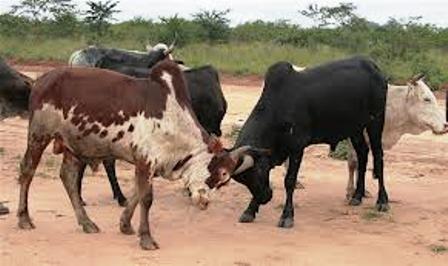
The main livelihood activity of the Karamojong is herding livestock, which has social and cultural importance. Crop cultivation is a secondary activity, undertaken only in areas where it is practicable.
Due to the arid climate of the region, the Karamojong have always practiced a sort of pastoral transhumance, where for 3-4 months in a year, they move their livestock to the neighboring districts in search of water and pasture for their animals.
The availability of food and water is always a concern and has an impact on the Karamojong's interaction with other ethnic groups.
Social organization of the Karamojong
The dominant feature of Karamojong society is their age system, which is strictly based on generation. As successive generations have an increasing overlap in age, this leads logically to a breakdown of the system, which appears to have occurred after rules were relaxed in the nineteenth century among their close neighbours, the Jie.
However, the Karamojong system is flexible enough to contain a build-up of tension between generations over a cycle of 50 years or so. When this can no longer be resolved peacefully, the breakdown in order leads to a switch in power from the ruling generation to their successors and a new status quo. The next changeover is expected around 2013.
[Dyson-Hudson, Neville (1966), Karimojong Politics, Clarendon Press, Oxford. Spencer, Paul (1998), The Pastoral Continuum: The Marginalization of Tradition in East Africa, Clarendon Press, Oxford (pp. 99-119).]
As both a rite of passage into manhood, as well as a requirement for engagement, a young Karamojong man is required to wrestle the woman he desires to marry. If he is successful in winning the wrestling match against the woman, he is now considered to be a man and is permitted to marry the woman.
This ensures that the man will be strong enough to care for and protect his wife. After a successful match, the dowry negotiations are allowed to commence. In an instance where the young man is unable to defeat the woman in the wrestling match, he will not be considered by his people to be a man and will often leave to marry a woman from a different people-group where a test of strength is not required.
If a non-Karamojong man desires to marry a Karamojong woman, he is also required to go through this ceremony.
Conflicts of the Karamojong
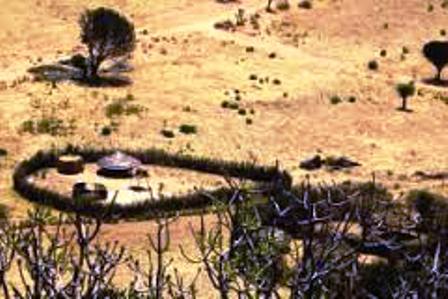 the manyatta, a homestead of the karamajong
the manyatta, a homestead of the karamajongThe Karamojong have been involved in various conflicts centered on the practice of cattle raids.
The Karamojong are in constant conflict with their neighbors in Uganda, Sudan and Kenya due to frequent cattle raids.
This could be partly due to a traditional belief that the Karamojong own all the cattle by a divine right, but also because cattle are also an important element in the negotiations for a bride and young men use the raids as a rite of passage and way of increasing their herds to gain status.
In recent years the nature and the outcome of the raids have become increasingly violent with the acquisition of AK47s by the Karamojong.
The Ugandan government have attempted to broker deals for weapons amnesties, but the number of cattle the Karamojong have wanted per gun has proved too steep for any meaningful agreement to be made.
External Forces of the Karamojong
The Karamojong's lives had been difficult for centuries---ekeing out an existence by raising cattle in such an inhospitable region. And yet, in the midst of such a harsh environment they were able to build a fairly stable and equitable society.
However, this century brought the entrance of external forces that could not or would not understand the world of the Karamojong. They would try to squeeze the Karamojong into the foreign and ill-fitting mold of their own cultures, and in the process, they would disrupt the very fabric of Karamojong society.
As a result of these foreign pressures, the Karamojong plunged headlong into cattle-raiding, and even outright banditry. The outside world now views them as a backward and even violent people, not understanding that what they now see is merely a caricature of Karamojong culture, with all of its foibles exaggerated.
Ugandans have a common saying; 'We shall not wait for Karamoja to develop.' That some Karimojong still walk almost naked without a bother after so many years of 'civilization' spreading to most parts of Africa is the most obvious evidence that this part of Uganda is among those in the continent still holding on to their traditional ways
The Karimojong or Karamojong belong to the semi-nomadic ethnic group of pastoralists. The Karimojong live in the north-east of Uganda in what is called the Karamoja region. It is made up Kotido, Moroto and Nakapiripirit districts.
The Karimojong are the largest of a cluster of culturally and historically related peoples, including the Jie, Teso, Dodoth (or Dodos), and Labwor of Uganda and the Turkana of neighbouring Kenya.
Due to the aridity of the region, the Karamojong have always practiced a sort of pastoral nomadism. Many people hear of the Karimojong when the perennial food and water crises has worsened or when they have raided another region for cattle, another of their intriguing traditions that has made them foes with all their neighbours.
Easy to identify a Karamojong
To most Ugandans the sheet-like cloths they adorn and the oblivion with which they leave their supposedly private parts exposed will readily identify a Karimojong.
Micah Lolem, the Member of Parliament for Nakapiripirit district explains that a typical Karamajong woman's attire entails just a skirt, colored beads around the neck and elastic or metallic bands tied around their ankles. The men on the other hand just throw a piece of cloth over their bodies and accompany it with plastic bangles.
"The tradition of wrapping themselves in many pieces of red checked cloths is only a modernization stunt copied from the Masai," explains Micah Lolem adding that the non-Karamajong residents of Karamoja may also dress differently.
The Karamajong will also still adorn markings on their forehead and around the face
Save for the town where a few brick houses will be spotted, Karamoja is also mainly littered with grass-thatched mud huts. A beautiful people with beautiful culture, but the Karamojong are always at the botton end of every development statistic in Uganda.
Karamojong Surviving in a difficult environment
This underdevelopment and the Karamajong's way of life can however justifiably be attributed to the constraints of their environment per the location of their habitat. Karamoja district occupies a semi-arid part of North Eastern Uganda just inside the border with Kenya.
Because of the sandy soils, even after a heavy rainstorm, water will only flows for a few days before it all sinks in the ground. This makes crop growing almost impossible, leaving them with little option but animal husbandry.
"We rare goats, sheep and lately camels raided from the Turkana. The main emphasis is however on cattle on which we entirely survive," says Lolem adding that today, some Karimojong are also taking to growing grains like sorghum.
Because of their arid environment, the Karamajong do not construct permanent homes but rather live their lives as nomadic herdsmen. With their animals, on which they entirely depend for survival, they move around looking for pasture and water.
Karamojong, life revolving around cattle
A Karamajong might not own goats or sheep but owning cattle is something that literally qualifies one to belong to this tribe.
"If you do not own a cow in Karamoja, you can't be allowed to address a congregation because you are not valued as a person," exclaims Lolem seriously.
The Karamajong accumulate their cattle either through inheritance by patrilineal descent or marriage. When a woman first arrives at her husband's, he is expected to allocate cattle to exclusively feed her and her children and these are to be increased as she bares more children.
It is this act of transferring cattle from the man's to the woman's side that makes her children legitimate members of her husband's lineage. The bride price also comprises entirely of cattle, the other gifts that may be offered are not as significant as the cattle.
Before raids became an offence per the government of Uganda, the elders granted young men permission and a formal ritual of blessing was performed. In this way they also accumulated their cattle from raiding their neighbors, even those across the border in Kenya.
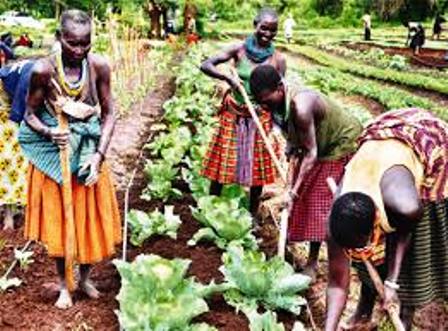
The Karamajong rear, graze and protect their cattle against wild beasts and raiders, or anything that would threaten the well being and size of their herds, jealously. While the men on the move sleep in the open for instance, they build thorn rough camps with thorn hedges to protect their cattle. Most of them do so with guns that had become a must-have for every family, until the recent disarmament exercise in Karamoja.
"A typical Karamajong dispute begins when someone seizes a stock he thinks are owed to him. If the elders decide on who is to pay and he does not admit the debt then they will order the other to take the stock from him (the adjudged), thus a raid," writes Lucy Mair, an honorary professor of Anthropology for the University of Kent in her book African Societies.
Power in Karamoja is exercised by an assembly of elders, and the executive power is the prerogative of the class of warriors.
While major conflicts in Karamoja will usually arise from disagreements regarding cattle, it is the cattle that are still used to settle these disputes through compensation of the wronged party. For instance, raiding will usually arise from a fight for pasture on disputed land. The side that has lost cattle in the fight will try to get it back through a raid.
Cattle have become a beast of a value too great to this tribe that they cannot even get themselves to kill the cattle even when they need to slaughter it for food.
Lucy Mair writes that the Karamajong traditionally do not kill their cattle except for ritual purposes like the initiation of a boy into manhood which requires that he kill an ox provided by his father for sacrifice on his own.
Lolem however explains that there are also occasions when the young men organize and slaughter a cow to be eaten roasted or cooked at the request of the elders, who also decide on whose kraal the cow will come from.
According to Mair, refusal to grant a cow at the request of the elders may result into a curse the consequences of which are feared. Thus even if a young man refused to offer the requested cow, fellow age mates would go and spear the cow themselves.
The other exception where cattle could be killed is when the need to appease Ajuk, the deity eminent for blessing and cursing, arises. It is also the responsibility of the elders to maintain constant mediation with Ajuk for the protection of the whole people's welfare, good health of their cattle and success in the raids against the cattle of the enemy neighbors.
Although the Karamajong mainly depend on cattle for food, they rarely slaughter them especially for food purposes. "Milk and blood are the daily food for us," Lolem says.
Lolem says that even when the cattle have to be slaughtered, the Karamajong cannot get themselves to kill the cattle by themselves."We spear the cow to draw blood so that it faints before being skinned and eaten roasted or cooked instead of killing it like the other people do," he explains.
"The blood is drawn from the neck of the cattle without killing them and mixed with milk to form the most popularly eaten meal in Karamoja called Ekyalakanu," he adds. The blood and milk are mainly stored in curdled form.
Even when they are slaughtered, almost no part of this precious animal goes to waste. The hides are used for making cloths and blankets and the scrota to make bags. "Their urine is used to cleanse vessels made of wood or of gourds, and to wash human hands, particularly in the cattle camps where there is seldom enough water for this," writes Mair.
It is the urine that is also used to curdle the milk, and is mixed with the mud to be used in building the huts.
"In the settlement where grains like sorghum are grown the droppings are used as manure," says Lolem.
He also explains that the intestines are roasted with the animals at rituals like initiation of the young men to manhood, though the women are not allowed to eat some parts like the small intestines.
Lucy Mair describes the Karamajong as being entirely dependent on their cattle. Their social, political, and religious way of life of the Karamajong entirely revolves around their cattle.
Politically, one possible way of distributing political functions is by allocating responsibility for the defense of the herds and grazing, and raiding those of neighbors among the young men.
In Karamoja, it is the cattle they herd which define human groups. In rituals involving large numbers of people each participant brings their herds with them.
Lucy Mair writes that an independent family is essentially one with complete control over a herd of cattle. "...if two independently owned herds are normally run together, the two owning groups will call themselves one family," she adds.
Lolem also explains that a village will be referred to as the kraal of the man who owns the largest herd of cattle there. You may now understand why it has been difficult for many Karimojong to go to school because the noblest duty is always to look after cattle.
The traditional Karimojong also hold a belief that all cattle belong to the Karimojong. This belief is behind the numerous cattle raids to neighbors and among themselves.
Though there are other tribes that hold their cattle in high regard, like the Bahima in Uganda, their lives would still go on without the cattle since some families do not even own any herds. For the Karamajong however, a life without their cattle would be unimaginable.
A typical traditional Karimojong marriage
The history and culture of Karimojong has not changed although the whole world is changing at a breakneck speed. Karimojong People in Uganda re respected because they have maintained their culture up to present day. Very few people have little knowledge about them so for me I had to get somebody I trust to give me that knowledge and I’m happy to share it with whomever wants to get this information.
In this article, my emphasis will be put to African traditional marriage among the Karimojong People of northeastern Uganda. Although marriage in other Ugandan tribes is taken lightly, the Karimojong were serious with marriage. Before a boy could announce his intention to marry, he had to prove to the elders of the village that he was already a man.
In the early times, when lions and elephants still teemed across the southern Karamoja plains, the boy had to set out alone armed only with a spear and hunt and kill single handed one of the lions or elephants that roamed the plains.
The boy would prove the achievement by reporting to elders at a formal meeting called a baraza.
He would show the blood on his spear and also present the animal’s tail. The remaining problem now would be to find sufficient cattle to pay the bride wealth.
Upon proving his manhood, the boy would be given a bull by his father. The Bull was then killed and shared among the boy’s male friends and relatives.
Besides, the boy would smear himself all over with dung from the entrails of the bull.
The boy’s hair would then be cut by one of his adult male friends, leaving a tuft at the back known as input to which a short string would be tied.
From then on, he was considered to have attained marriageable age and with permission of the elders he could begin to wear ostrich feathers.
The boy’s father would then instruct him to look for a girl to marry. No compulsion was brought to bear on either party in a marriage but the father could reject the boy’s choice if he deemed the choice unsatisfactory.
Sexual contact was a usual prerequisite for the actual marriage and cases were few in which bride wealth was paid before such a contact had taken place.
The boy would make his choice and instruct the father to pay bride wealth and this marked the beginning of negotiations between the girl’s and the boy’s families.
The first journey of the boy’s parents to the girl’s home could not be under taken at the period of the new moon.
Among the Karimojong people, when the bride wealth arrangements were finalized, the bride would be brought along with the delegation that came to collect the cows and she would be left at her new home.
A delegation from the boy’s family would accompany the dowry and on reaching the girl’s home, they wee received outside the girl’s mother’s hut.
She would spread out hides for all to sit down on whilst she lit a pipe which was handed around and puffed by all in turn, the elders first.
Thereafter, the delegation would return home.
When they reached home, the boy would remove the leopard’s skin and the ostrich feathers he had been wearing.
He would not sleep with his bride that night. On the following morning the boy’s mother would take a calabash of cooking butter to the door of the bride’s apartment and call her.
She would then put a necklace and a piece of emuria grass on the bride and smear the butter all over her except the legs. She would then remove all the girl’s ornaments and dress her like a married woman.
The exact attire consisted of a goat’s skin hung down from the waist, the hairy side outward and a calf skin slung from the shoulders and reaching the knees.
The goat’s skin had to be well shaped otherwise it would cause shame to the bride among her fellow women when walking or dancing.
After being dressed, the bride and three other girls would go and cut a load of firewood each to give to the boy’s mother.
That same night, the boy would sleep with his wife and they would continue to do so in that hut until a child was born.
After that, the husband would build a separate hut for that particular wife.
The Karimojong people were polygamous. The number of wives a man could marry was only limited by bride wealth obligations.
No marriage between relatives was allowed, no matter how remote the degree of consanguinity. Customarily, on arrival at the home of her husband to be, the girl was taken through the large kraal entrance and led to her own house.
Donning his leopard- skin cloak, his knee bells, he address and zebra tail, the groom would circle the entire village pretending to be a brave animal, tossing his head and swishing his tail.
Finally, people would gather in the cattle kraal and the ceremony would be rounded off with a dance.
Other Pages of Interest
Kenya Art | Kenya Festivals | Kenya Gender Issues | Kenya Gestures | Kenya Greetings | Kenya History | Kenya Language | Kenya Literature | Kenya Modern Culture | Kenya Music | Kenya National Anthem | National Dress Cord of Kenya | Kenya People | Kenya Respect | Kenya Taboos | Kenya Television and Culture |
Recent Articles
-
Garam Masala Appetizers ,How to Make Garam Masala,Kenya Cuisines
Sep 21, 14 03:38 PM
Garam Masala Appetizers are originally Indian food but of recent, many Kenyans use it. Therefore, on this site, we will guide you on how to make it easily. -
The Details of the Baruuli-Banyara People and their Culture in Uganda
Sep 03, 14 12:32 AM
The Baruuli-Banyala are a people of Central Uganda who generally live near the Nile River-Lake Kyoga basin. -
Guide to Nubi People and their Culture in Kenya and Uganda
Sep 03, 14 12:24 AM
The Nubians consist of seven non-Arab Muslim tribes which originated in the Nubia region, an area between Aswan in southern
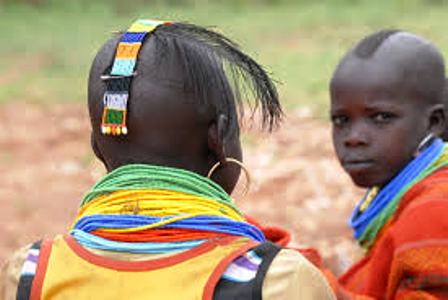
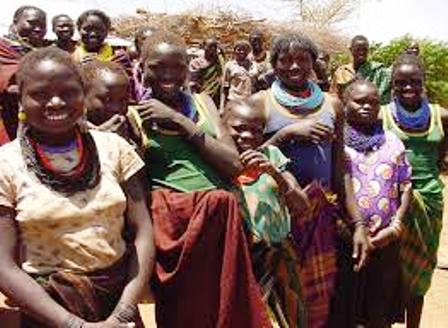
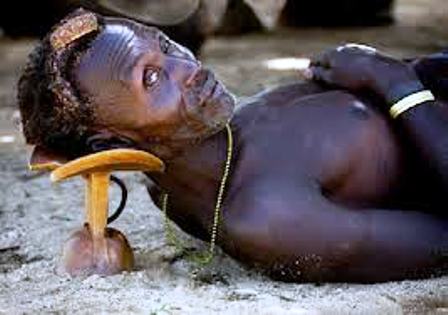
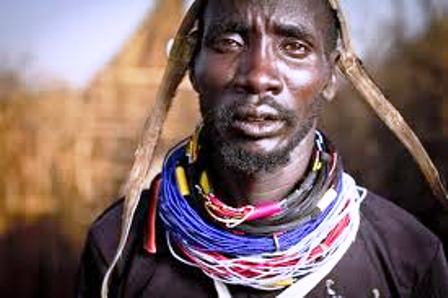
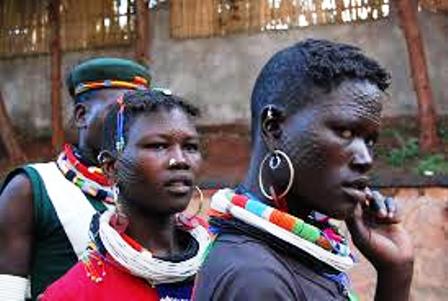
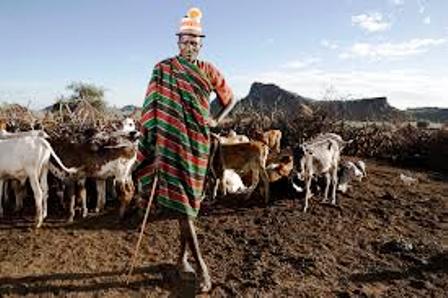
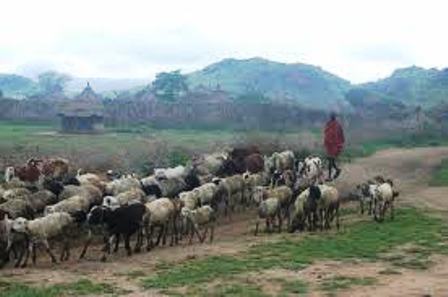
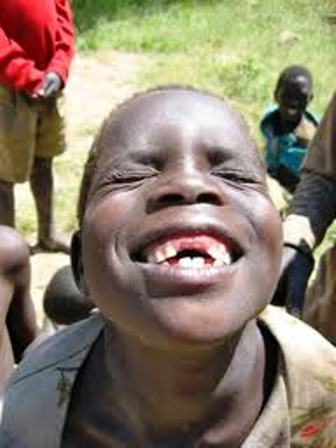
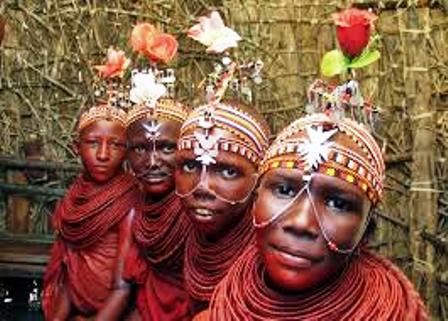
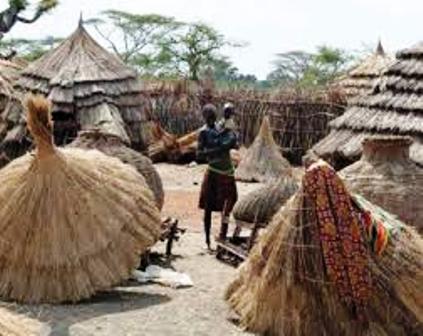
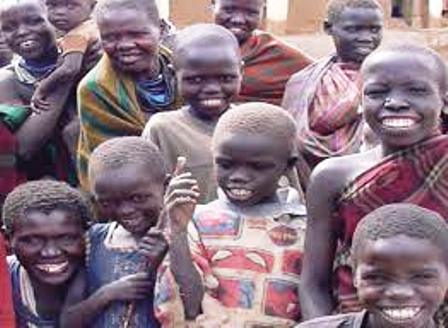







New! Comments
Have your say about what you just read! Leave me a comment in the box below.